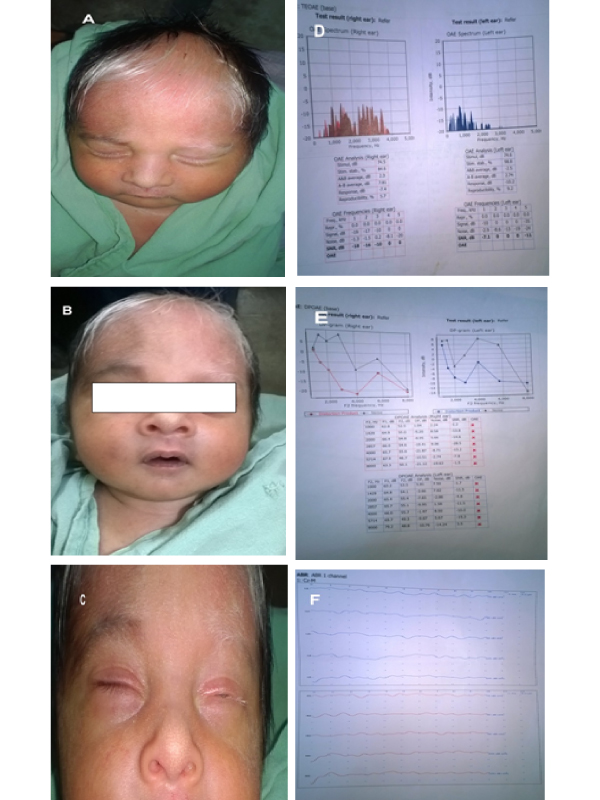2376-0249
Medical Image - International Journal of Clinical & Medical Images (2015) Volume 2, Issue 6

Author(s): Monish PR, Ajay M*, Sengupta S, Saha J and Sk Basu
Deafness is a common childhood problem. Serious hearing impairment is found in one in 800 new-borns. Deafness can be broadly categorized into syndromic (deafness associated with other symptoms) or nonsyndromic (deafness associated with no other symptoms) [1]. Only 30% of congenital deafness is syndromic. The following is a case of Waardenburg syndrome. The child having classical clinical features of
(1) Dystopia canthorum
(2) Pigmentary abnormalities of hair, skin, and iris (white forelock)
(3) Sensorineural deafness.
The genes that are found associated with this syndrome are PAX3, MITF, SLUG, EDNRB, EDN3, and SOX10. These genes when mutated either cause or predispose to progressive deafness. The otoacoustic emission study and brain stem evoked response audiometry study was done in this child and, the child was found to have a severe degree of sensorineural deafness. The child’s ECHO reports were normal. There was no clinical feature suggestive of Hirschsprung’s disease or Limb abnormality. This condition is usually inherited as autosomal dominant variety [3]. There are 4 types of Waardenburg’s syndrome. All the clinical features suggest that the child belong to type 1 Waardenburg’s syndrome.
 Awards Nomination
Awards Nomination

